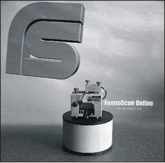FemtoScan
Microscope features:
- FemtoScan - the first Internet-driven microscope. It is operated via Internet
using unique software FemtoScan Online. While single user controls the microscope,
unlimited number of users can observe the scanning process in real time, simultaneously obtain all the data,
process and analyze it.
- All popular modes in sigle device: STM, AFM, modulation modes,
all in air and in liquids.
- Reliable design
- Low price
FemtoScan Specifications
FemtoScan AFM/STM main base
True vertical probe/sample initial approach
Initial approach — step motor
Initial approach range — up to 4 mm
Initial approach step size — 30 nm
Typical thermal drift — less than 1 nm/s
Sample position — horizontal
Sample size — up to 15 mm in diameter, 5 mm in height
Scan size — 2 m or 10 m
Scan rate — up to 30 Hz
Sample holder — magnetic
FemtoScan STM Head
Height, Deflection, I(U), I(Z) Modes
Interleave, DualTrace, Lithography Modes
Tunnel current ranges: 10 pA - 10 nA, 0.1 pA - 1 nA (optional)
Bias voltage ±9 V
Tip diameter 0.1 - 0.4 mm
Resolution — atomic on graphite
FemtoScan AFM Head
Height, Deflection and Friction Modes
Resolution — atomic on mica
Resonant Modes (semi-contact)
Lift, Interleave, DualTrace, Lithography Modes
FemtoScan SRM (Scanning Resistive Microscope) Head
Resolution — 1 nm
Electric current — 1 nA - 1 mkA
FemtoScan Controller Electronics
Data and feedback control using Digital Signal Processor with a 133 MHz frequency for arithmetic operations
X, Y, and Z high voltage amplifiers with ±135 V output range
7 DACs with 16 bit resolution and 10 ms sampling time for X, Y, Z, and U signals, 3 optional DACs
2 frequency generators, 32 bit frequency resolution, 12 bit phase resolution, 10 bit amplitude resolution
Two input ADCs with 16 bit resolution and 10 ms acquisition time
Tunnel voltage amplifier with ±10 V output range
FemtoScan Sample Heater (optional)
Temperature rate — up to 80 oC
Temperature accuracy — 0,05 oC
Thermal drift during heating (max):
— 100 nm/ oC (normal direction), 40 nm/ oC (lateral direction)
|





